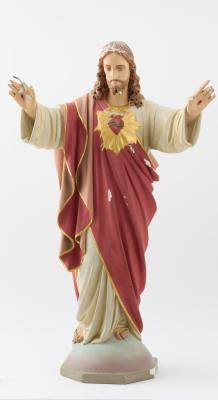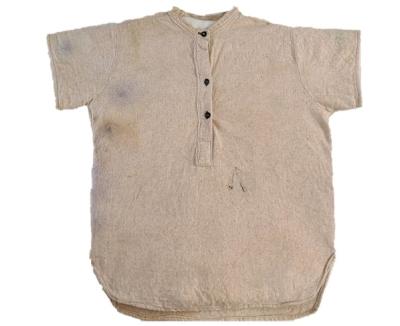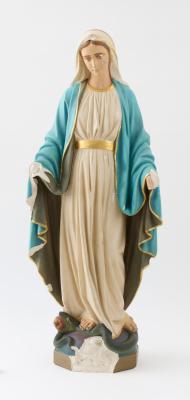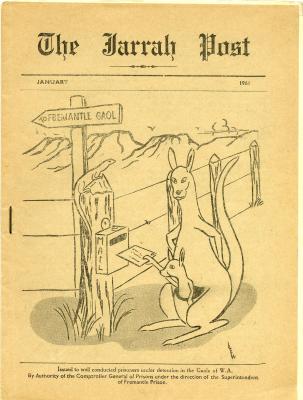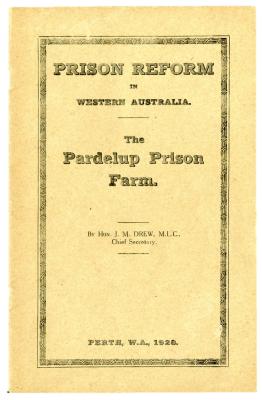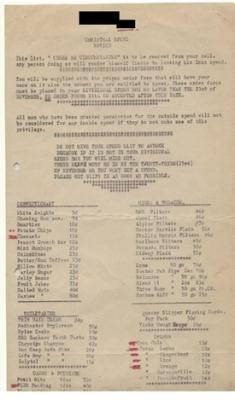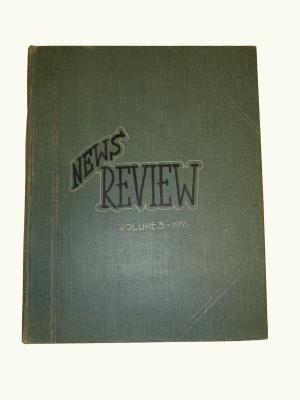PAINTED SIGN
Large, rectangular, painted, metal sign, made from a single piece of sheet metal. The surface has been painted black, with painted stylized text on one side in cream, with a red and green shadow, reading "No 4 DIVISION". Each corner of the sign has been cut into an inverted circular shape.
This sign was accessioned into the Museum's collection between 28/04/88 and 24/08/88 (see Curator's report).
Details
Details
When first constructed, the Main Cell Block at Fremantle Prison was one long, open space, based on the idea that all inmates were convicts together. However once the Prison was handed over to the Colonial Government a range of prisoners, from those on remand, juveniles, and lifers, were incarcerated in the same place. After the Royal Commission in 1899 it was decided to erect large partitions within the Main Cell Block of Fremantle Prison to separate the cells into four areas so that prisoners would be segregated dependent on their sentence. Access to the yards was adapted consequently; in 1912 it was noted that an opening was to be cut in the wall of 4 Division to allow access to the exercise yard.
In all likelihood the sign was painted in the Prison's Painters’ Shop by prisoners. Sign writing was taught at Fremantle Prison for an extended period of time; it was a form of revenue for the Prison as well as a useful trade for prisoners to learn. Signs were painted for use within Fremantle Prison and were also commissioned by individuals and private companies. In 1900 the Painters’ Shop was established in the new West Workshops where they remained at least until 1968.
At the time of the Convict Establishment, on the northern end of what would eventually be known as 4 Division, were Association Wards. These areas were designed to accommodate convicts who were getting ready for release into the community. Under the separate system, prisoners spent most of their time segregated in single cells. By living in the Association Wards convicts where able to experience the complexities of communal living before being released. In 1862 the first level Association Ward in 4 Division was converted into a Catholic Chapel. Then in 1925 the ground floor Association Ward, beneath the chapel, was converted into a concert hall.
Over the years of Fremantle Prison’s operation, 4 Division has had many occupants. In the early part of the twentieth century, the Medical Officer had his surgery and a dispensary on the ground floor. Part of the Division was also converted to serve as a reformatory during the 1920s. In the 1950s and 1960s it was used for those serving indeterminate sentences and was known as the ‘Doctors Key’ or ‘Governor’s Pleasure’ Division. During the 1970s a radio room was established in cells on the upper floor, which received public broadcast programs and distributed them throughout the Prison. By the 1980s it housed those serving long term sentences, particularly those incarcerated for murder.
Before 1989 the stairs in 4 Division only went to the first floor, so eventually stairs were installed so that prisoners could access the rear of the Catholic Chapel without having to go into 3 Division to use the stairs. The earliest datable graffiti in the Prison is located on the second floor of 4 Division, in the cell occupied by convict James Walsh. Convicted of forgery in 1852 and sentenced to 15 years transportation, Walsh was granted his first Ticket-of-Leave in 1856, before receiving his conditional pardon in 1859. However, he was reconvicted in 1859 for forging a one-pound note, and it is believed that it was during this sentence in the Convict Establishment that he completed the artwork in his cell. Prisoners were not permitted to draw on the walls of their cell, but it is believed Walsh took the buttons from his uniform, which were made from lead, and used them for drawing. To avoid detection, Walsh covered his work using a white wash, which was used throughout the Establishment as a disinfectant to control insect infestations. Walsh’s drawings weren’t discovered until 1964, when a cleaner accidentally knocked into the wall of the cell, which was being used as a storeroom at the time, and some of the white wash fell away. Today, Walsh is recognized as a significant Western Australian colonial artist for his landscape paintings of the early colony in the 1860s.
One of 4 Division’s most notorious occupants was Joseph Bolitho Johns. Also known as ‘Moondyne Joe’, he arrived in Fremantle as a convict in 1853, where he was immediately granted his Ticket-of-Leave. However in 1861 he was charged with escaping legal custody, and was returned to the Convict Establishment for three years. Granted another Ticket-of-Leave during 1861, by 1865 he was again arrested, this time receiving a ten year sentence for stealing and killing an ox. Later the same year he escaped from a work party, but was recaptured and given an extra 12 months to serve. In 1866 he managed to break free once again and was at large for about a month before being recaptured, this time with another five years added to his sentence. By now Moondyne Joe’s ability to escape meant a specially reinforced cell was constructed in 4 Division in an effort to prevent him escaping. This cell remains intact today. Governor John Hampton told Moondyne Joe that, “If you get out again, I’ll forgive you.” To provide him with some fresh air and exercise, in 1867 Joe was put to work on a rock pile near the front wall of the Prison. The broken rocks were meant to be cleared every day, but his guards’ neglected procedure. Once the rock pile grew large enough to shield him from view, Joe cut a hole through the west wall of the Prison and escaped. He was at large for almost two years before being recaptured in 1869. When he was returned, Joe reminded Governor Hampton of his agreement and was eventually granted his Ticket-of-Leave in 1871.
